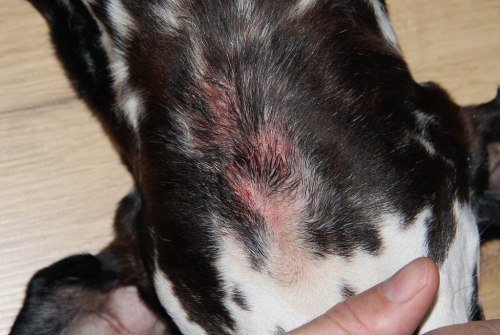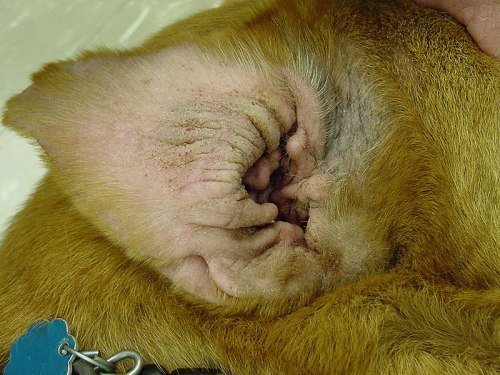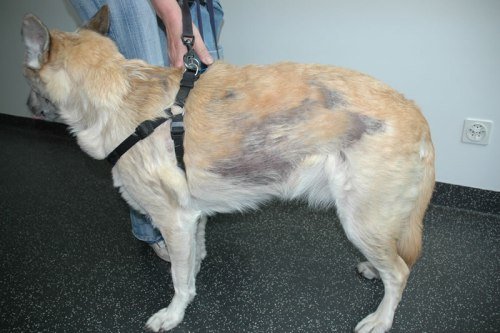Skin infections are very common among the pets, especially dogs. Dogs are more prone to infections, skin problems, which must be taken care of at the initial level in order to avoid any type of emergency. During such cases the owner will notice significant changes in their pet’s coat like scaling, papules, crusting, lesions, or even pustules. Several types of treatments or medications like antihistamines, antibiotics, prescribed shampoos, sprays, antifungal medications, anti-inflammatory medications are few ways to treat infections. Nutritional supplements and fatty acids also serve the purpose of curing infections.
What are Hot Spots?

Hot spots are found more in dogs and cats and are formally known as pyotraumatic dermatitis. During this case a sudden swelling is noticed in the skin which is really painful. The lesions often contain pus and discharge accompanied by loss of hair around the lesion. The most common area for hot spots is the ears and the flank region. Most of the pets have the habit of biting their ears and flank region which often leads to the development of these lesions. These lesions may happen due to food allergies, underlying flea bite allergy, or even due to contact or inhalant allergies.
How to treat Hot Spots?
Hot spots are treated by cleaning the eruption with a drying antiseptic pet shampoo or at times even with soap. Before the cleaning the hair of the pet is tied up tight with a clip to make the process go easy. In During the treatment the pets are often and most of the time given oral tablet or injection to protect them from the pain. Out of the many available medicines, antibiotic sprays like Betagen, Genesis topical spray, are the best options for treating hot spots in dogs. Oral antibiotics are the best option to treat or prevent secondary bacterial infections. KisKin cream can also be used to treat hot spots in dogs.
Atopic Dermatitis (atopy)

Atopic Dermatitis is a condition which results from inhalant or contact allergies. During this the skin swells us and is commonly seen in dogs and cats. It can happen from allergens like pollens, grass, ragweed, molds, or even trees. One of the common sign of this disease is constant licking and excessive itching around the feet, ears. During this bacterial infection or secondary yeast may develop which may lead to crusting, discharge, scabbing, and even bad odor. Most of the pet during atopic dermatitis rubs their face and eyes as well. Pets infected with this disease have high chances of developing hives and increased eruption as compared to other pets. These infections or lesions are seasonal in nature.
How to Treat Atopic Dermatitis
Based on the past skin problem history and the pattern of the skin lesions, atopic dermatitis is diagnosed. Atopic dermatitis can be treated by steroid therapy, based on the duration of the itching. Other treatment options like the use of oral antihistamines like Hydroxyzine HCI, prescribed shampoo therapies, also helps in curing this disease which mostly happens from environmental allergens.
Dry Skin

Dry skin in pets happens due to many reasons like nutritional imbalances; deficiencies due to many reasons like food allergies, allergies due to flea bite, or even atopy are few of the basic reasons for it. Pets with digestion problem, intestinal parasites are more prone to dry skin. Pets suffering from non-specific liver or kidney ailments or even cancer also have the risk of developing this disease. Symptoms of dry skin are flaky skin, excessive hair loss as compared to the normal amount.
How to Treat Dry Skin?
Medicated shampoo can be used once or twice a week to treat dry skin. Omega 3 fatty acid supplements are known to help when used for a longer period of time. But all of these must be used on the pet only after proper diagnosis by the doctor. Never use anything without consulting a pet doctor.
Hair Loss

Hair loss and increased shedding can be the cause of imbalance or improper diet, food allergies, contact or inhalant allergies, and even allergies due to flea bit, are few of the reasons for this disease. External skin parasites like ringworm or more commonly known as mange, bacterial skin infection, can cause problem with the hair that covers their body. The symptoms of hair loss in pets like dogs are excessive hair loss which is not common or normal, patchy thinning of the coat, secondary skin lesions like discharge, crusting, papules, scabbing, and even pustules are the sign of hair loss.
How to Treat Hair Loss?
There are several Pet shampoos available in market which can be used. However make sure to consult your vet before using it. You may also provide multi-vitamin tablet to chews for dogs can help in curing hair loss. Regular use of pet shampoo, nutritional supplements with digestive enzymes like Omega 3 fatty acids, NaturVet Digestive Enzymes, can help in dealing with hair loss in pets.
Mange

There are two types of mange which can be commonly seen in pets today. The first one is the demodectic mange, which happens due to the excessive growth of the skin parasite which is normally present in the pet skin. Demodectic mange can also be sometimes due to genetic conditions, immune deficiency factors like the immunosuppressive medical conditions. During this, the pets experience excessive loss of hair near the face or extremities. It also leads to secondary crusting, infections, scabbing and discharge which are really painful at the same time.
How to treat Mange
Veterinarians detect this disease or infection by microscopic exam and skin scrape. Demodectic mange can be treated with the medicated shampoo or cream. Apply it on dogs weekly or sometimes bi-weekly routine. Other product like the Anti-Mange shampoo therapy also helps is washing away the mites from the pet’s body.
The next type of mange is the Scabies mites. They cause intense itching especially near the thinly haired areas like the abdomen, ear lobes, hocks, and elbows. Identifying or diagnosing these infections are difficult because the mites are difficult to notice on routine skin scrapings. Scabies mites can be treated with the use of topical products. This as compared to demodectic mange is highly contagious and can spread to other pets very easily.
